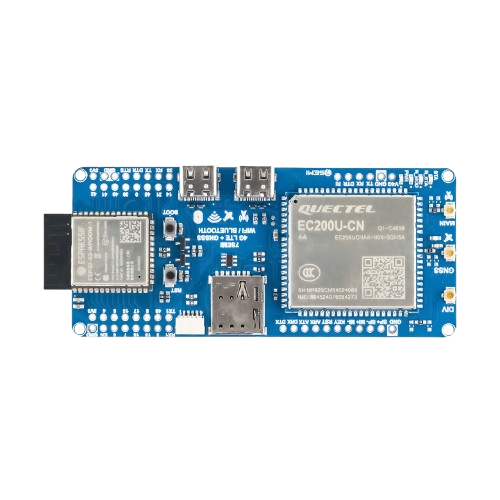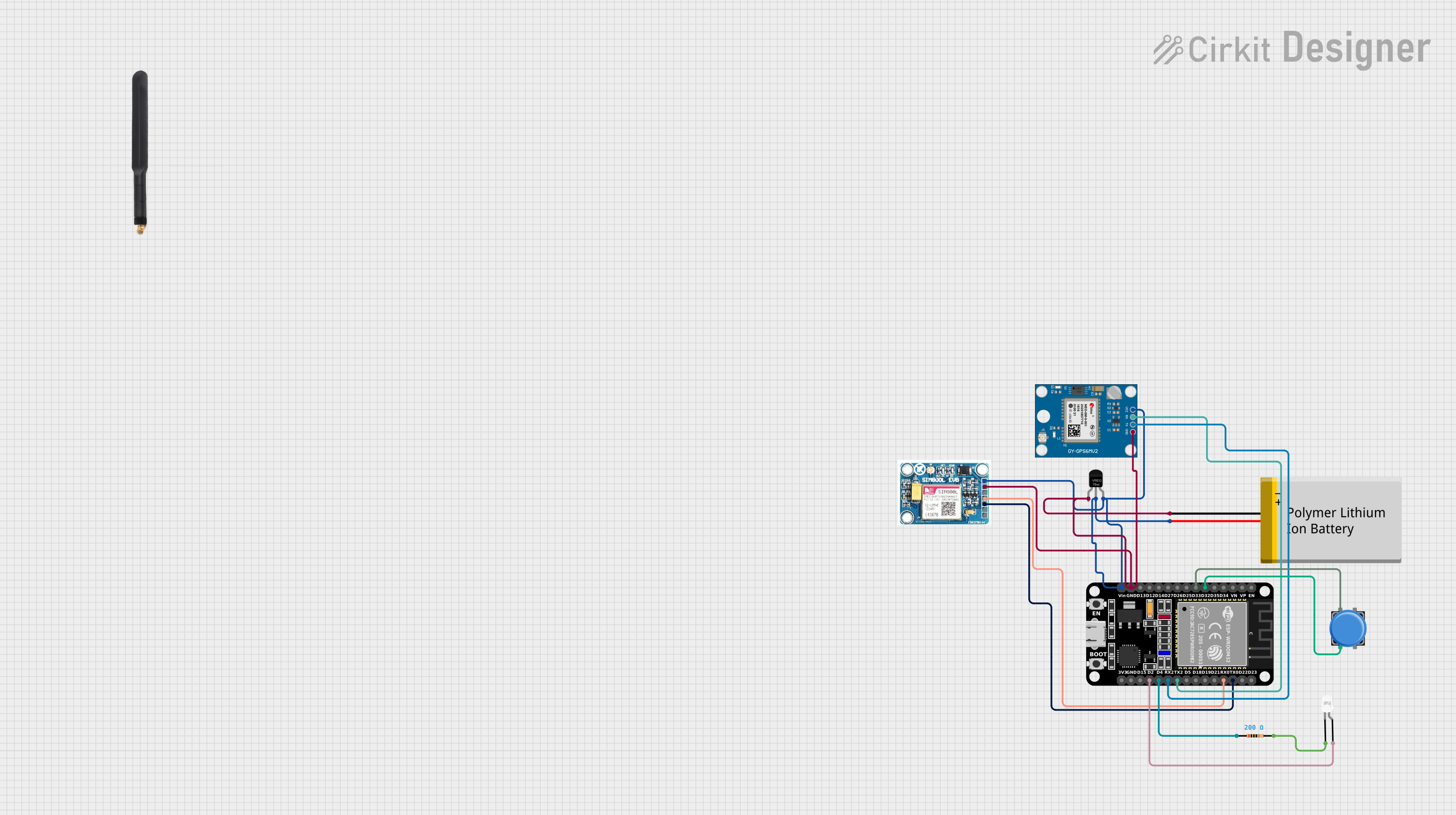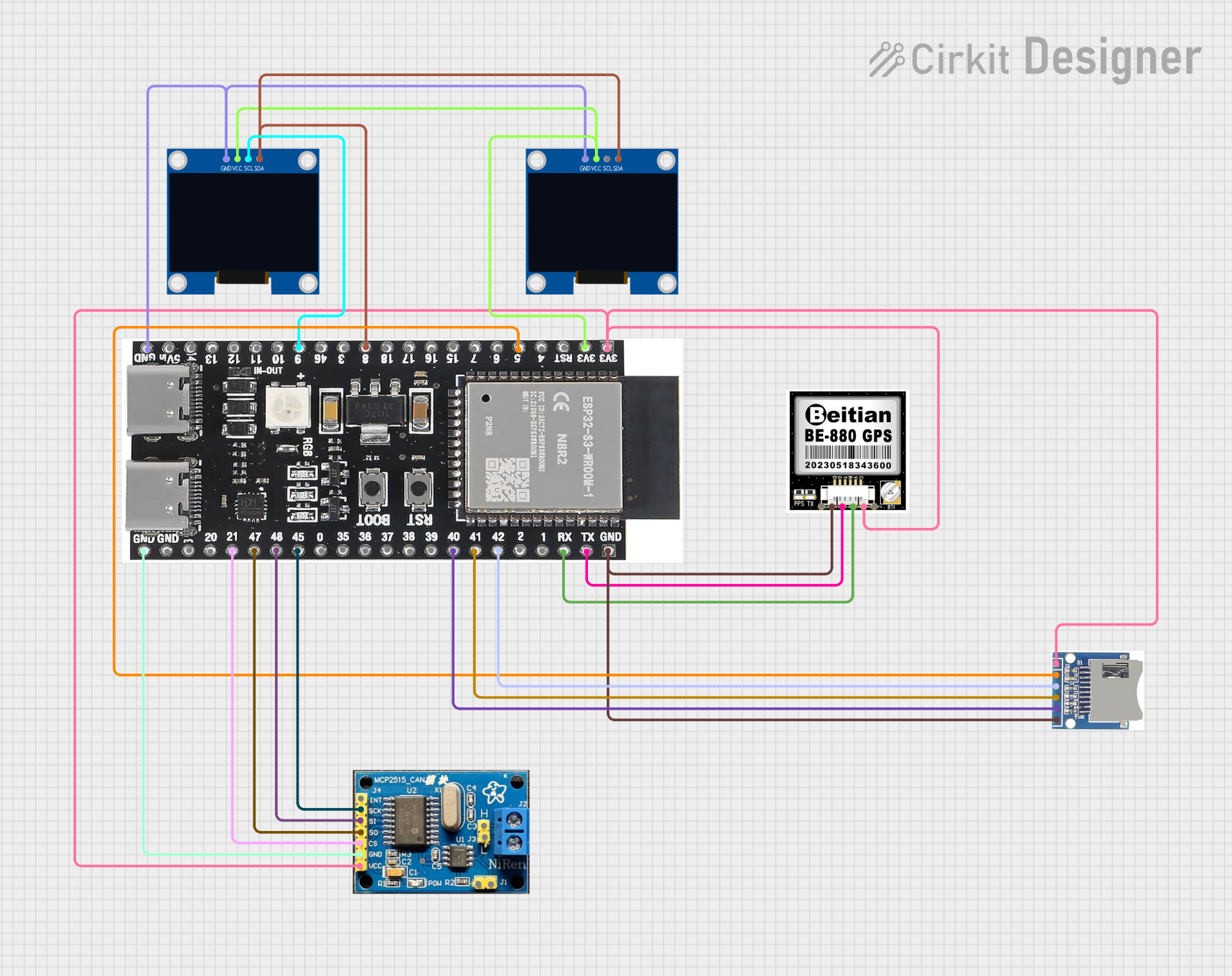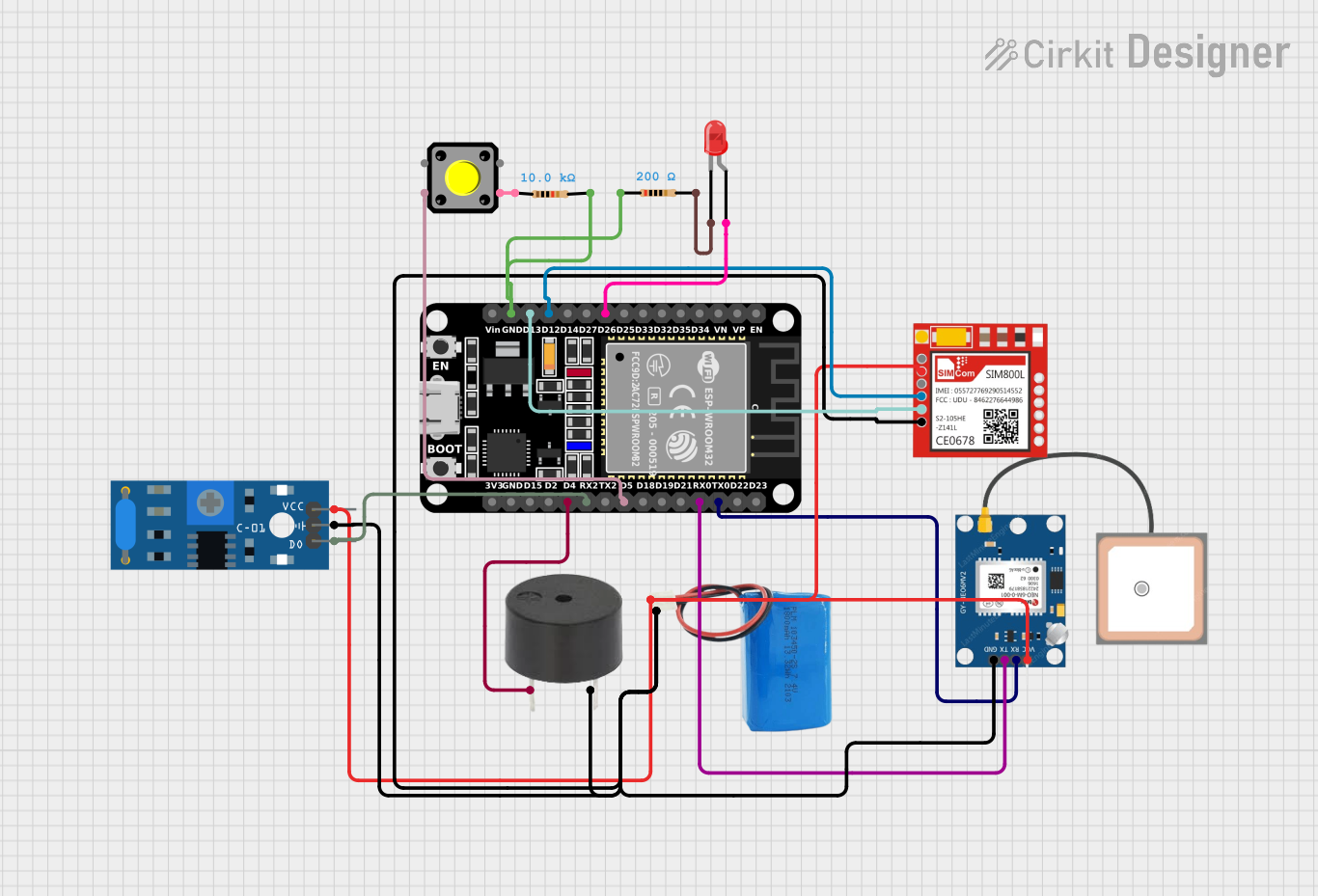
How to Use ESP32-S3 EC200U 4G LTE : Examples, Pinouts, and Specs

 Design with ESP32-S3 EC200U 4G LTE in Cirkit Designer
Design with ESP32-S3 EC200U 4G LTE in Cirkit DesignerIntroduction
The ESP32-S3 EC200U 4G LTE is a versatile IoT module manufactured by 7Semi (Part ID: DC-10120). It combines the powerful ESP32-S3 microcontroller with the Quectel EC200U 4G LTE modem, enabling seamless integration of Wi-Fi, Bluetooth, and cellular connectivity in a single device. This module is ideal for applications requiring reliable wireless communication, such as IoT devices, smart home systems, industrial automation, and remote monitoring.
Explore Projects Built with ESP32-S3 EC200U 4G LTE

 Open Project in Cirkit Designer
Open Project in Cirkit Designer
 Open Project in Cirkit Designer
Open Project in Cirkit Designer
 Open Project in Cirkit Designer
Open Project in Cirkit Designer
 Open Project in Cirkit Designer
Open Project in Cirkit DesignerExplore Projects Built with ESP32-S3 EC200U 4G LTE

 Open Project in Cirkit Designer
Open Project in Cirkit Designer
 Open Project in Cirkit Designer
Open Project in Cirkit Designer
 Open Project in Cirkit Designer
Open Project in Cirkit Designer
 Open Project in Cirkit Designer
Open Project in Cirkit DesignerCommon Applications and Use Cases
- IoT Gateways: Facilitates data transmission between IoT devices and cloud platforms.
- Smart Home Devices: Enables remote control and monitoring of smart appliances.
- Industrial Automation: Provides robust connectivity for industrial sensors and controllers.
- Vehicle Tracking: Supports GPS and LTE for real-time vehicle location tracking.
- Remote Monitoring: Ideal for applications like weather stations and agricultural monitoring.
Technical Specifications
Key Technical Details
| Parameter | Specification |
|---|---|
| Microcontroller | ESP32-S3 (Xtensa® 32-bit LX7 dual-core processor) |
| Cellular Modem | Quectel EC200U (4G LTE Cat 4) |
| Wi-Fi | 802.11 b/g/n (2.4 GHz) |
| Bluetooth | Bluetooth 5.0 (LE) |
| Operating Voltage | 3.3V |
| Power Consumption | 5 µA (deep sleep), ~200 mA (active LTE transmission) |
| GPIO Pins | 34 GPIOs (configurable for digital/analog I/O) |
| UART Interfaces | 3 UARTs |
| SPI/I2C/I2S Support | Yes |
| LTE Bands | B1/B3/B5/B7/B8/B20/B28 |
| GNSS Support | GPS, GLONASS, BeiDou, Galileo |
| Operating Temperature | -40°C to +85°C |
| Dimensions | 50 mm x 30 mm x 5 mm |
Pin Configuration and Descriptions
| Pin Name | Type | Description |
|---|---|---|
| VIN | Power Input | 3.3V power supply input. |
| GND | Ground | Ground connection. |
| TXD0 | UART TX | UART0 transmit pin for serial communication. |
| RXD0 | UART RX | UART0 receive pin for serial communication. |
| GPIO0 | Digital I/O | General-purpose I/O pin. |
| GPIO1 | Digital I/O | General-purpose I/O pin. |
| LTE_TX | UART TX | Transmit pin for LTE modem communication. |
| LTE_RX | UART RX | Receive pin for LTE modem communication. |
| ANT | RF Connector | External antenna connection for LTE/GNSS. |
| RESET | Input | Active-low reset pin for the module. |
Usage Instructions
How to Use the Component in a Circuit
- Power Supply: Connect the VIN pin to a stable 3.3V power source and GND to ground.
- Serial Communication: Use the TXD0 and RXD0 pins to interface with a microcontroller or PC via UART.
- LTE Antenna: Attach an external LTE antenna to the ANT pin for optimal cellular performance.
- GPIO Configuration: Configure GPIO pins as needed for digital or analog input/output.
- LTE Modem Communication: Use the LTE_TX and LTE_RX pins to communicate with the Quectel EC200U modem.
- Reset: Connect the RESET pin to a push-button or microcontroller for manual or software-controlled resets.
Important Considerations and Best Practices
- Power Stability: Ensure a clean and stable 3.3V power supply to avoid communication issues.
- Antenna Placement: Position the LTE antenna away from noise sources for better signal quality.
- Firmware Updates: Regularly update the ESP32-S3 firmware to ensure compatibility and security.
- Deep Sleep Mode: Use deep sleep mode to minimize power consumption in battery-powered applications.
- UART Baud Rate: Configure the UART baud rate to match the connected device for reliable communication.
Example: Connecting to an Arduino UNO
The ESP32-S3 EC200U can be connected to an Arduino UNO for basic communication. Below is an example of sending AT commands to the LTE modem:
#include <SoftwareSerial.h>
// Define RX and TX pins for SoftwareSerial
SoftwareSerial LTE(10, 11); // RX = pin 10, TX = pin 11
void setup() {
Serial.begin(9600); // Initialize Serial Monitor
LTE.begin(115200); // Initialize LTE module communication
Serial.println("Initializing LTE Module...");
LTE.println("AT"); // Send AT command to check communication
}
void loop() {
// Check if LTE module has sent data
if (LTE.available()) {
String response = LTE.readString();
Serial.println("LTE Response: " + response);
}
// Check if user has sent data via Serial Monitor
if (Serial.available()) {
String command = Serial.readString();
LTE.println(command); // Forward command to LTE module
}
}
Note: Replace pins 10 and 11 with the appropriate pins on your Arduino UNO. Ensure the LTE module's TX and RX pins are connected to the Arduino's RX and TX pins, respectively.
Troubleshooting and FAQs
Common Issues and Solutions
No Response from LTE Module
- Cause: Incorrect UART connection or baud rate mismatch.
- Solution: Verify TX and RX connections and ensure the baud rate is set to 115200.
Poor LTE Signal
- Cause: Improper antenna placement or weak network coverage.
- Solution: Reposition the antenna and ensure it is securely connected.
Module Not Powering On
- Cause: Insufficient power supply or incorrect voltage.
- Solution: Ensure a stable 3.3V power source with sufficient current capacity.
Frequent Resets
- Cause: Power instability or excessive noise.
- Solution: Use decoupling capacitors near the VIN pin and minimize noise sources.
FAQs
Q: Can the ESP32-S3 EC200U operate without an LTE connection?
A: Yes, the module can function as a standalone ESP32-S3 microcontroller with Wi-Fi and Bluetooth.Q: What is the maximum data rate for LTE?
A: The Quectel EC200U supports LTE Cat 4 with a maximum download speed of 150 Mbps.Q: Is GNSS functionality available out of the box?
A: Yes, GNSS is supported, but an external antenna is required for optimal performance.Q: Can I use this module in outdoor environments?
A: Yes, the module operates reliably in temperatures ranging from -40°C to +85°C.
This documentation provides a comprehensive guide to the ESP32-S3 EC200U 4G LTE module, ensuring users can effectively integrate it into their projects.